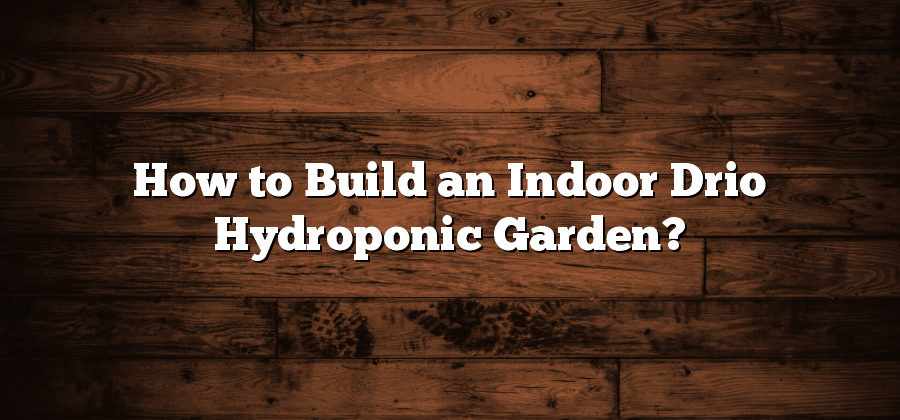Benefits of Indoor Hydroponic Gardening
Indoor hydroponic gardening offers numerous benefits that make it an attractive option for avid gardeners and those looking to venture into the world of cultivating plants. One of the primary advantages is the ability to grow plants year-round, regardless of the external environment and weather conditions. By providing a controlled indoor environment, hydroponic systems ensure consistent temperature, humidity, and lighting, which are essential for optimal plant growth. This means you can enjoy fresh, homegrown produce even during the coldest winter months or in areas with limited outdoor gardening space.
Another notable benefit of indoor hydroponics is the efficient use of resources, such as water and nutrients. Unlike traditional soil-based gardening, hydroponic systems allow for precise control over nutrient levels, resulting in reduced water consumption and minimal waste. Additionally, by eliminating the need for soil, hydroponics eliminates the risk of soil-borne diseases and pests, leading to healthier plants and higher yields. These factors not only contribute to sustainable agriculture practices but also make indoor hydroponic gardening an eco-friendly choice.
Understanding the Basics of Hydroponics
Hydroponics is a method of growing plants without the use of soil. Instead, plants are grown in a nutrient-rich water solution that provides all the necessary elements for their growth. This method has gained popularity in recent years due to its numerous benefits and advantages.
One of the key advantages of hydroponics is its ability to save water. Traditional soil-based gardening requires large amounts of water to keep the plants hydrated, as the soil tends to absorb and retain water. In hydroponics, water is circulated and reused, resulting in significant water conservation. Additionally, since the plants are grown in a controlled environment, the risk of water evaporation is greatly reduced, leading to even more water savings.
Selecting the Right Location for Your Indoor Garden
When it comes to indoor hydroponic gardening, selecting the right location for your garden is of utmost importance. The success and productivity of your plants depend greatly on the environment they are placed in. There are a few factors you need to consider when deciding on the ideal location for your indoor garden.
Firstly, it is essential to choose a spot that receives sufficient light. Since indoor gardens do not have direct access to sunlight, you will need to ensure they receive artificial light that simulates natural sunlight. Placing your garden near a window may seem like a good idea, but it might not be enough to provide the optimal amount of light needed for plant growth. Instead, consider using grow lights or LED lights specifically designed for indoor gardening. These lights can be adjusted to provide the appropriate spectrum and intensity to mimic natural sunlight. Additionally, ensure your chosen location has access to electricity to power these lights.
Essential Supplies for Your Hydroponic Garden
Essential Supplies for Your Hydroponic Garden
When it comes to setting up an indoor hydroponic garden, having the right supplies is essential for success. These supplies not only support the growth and development of your plants, but they also ensure that your hydroponic system functions effectively. Here are some key supplies that you will need to consider:
1. Growing medium: Unlike traditional gardening methods that use soil, hydroponic gardens require a different growing medium. This is because hydroponics is a soil-less cultivation method, relying on the nutrient-rich water instead. Some popular options for growing mediums in hydroponics include coconut coir, expanded clay pebbles, and rockwool. Each medium has its own advantages and considerations, so it’s important to choose the one that suits your needs best.
2. Nutrient solution: One of the main benefits of hydroponics is the ability to precisely control the nutrients your plants receive. A nutrient solution is a mixture of essential minerals and elements that are dissolved in water and then delivered directly to the plant’s root system. This solution provides all the necessary nutrients for optimal growth and development. It’s crucial to choose a high-quality nutrient solution that is specifically formulated for hydroponic gardening to ensure your plants thrive.
Choosing the Ideal Plants for Hydroponic Cultivation
Hydroponic gardening is a highly versatile method of cultivation that allows for the successful growth of a wide range of plants. However, when it comes to selecting the ideal plants for hydroponic cultivation, it is essential to consider a few key factors. Firstly, choose plants that have a relatively short growth cycle as this will ensure a more efficient use of resources and quicker harvests. Additionally, selecting plants that are naturally well-suited to soilless cultivation will increase the chances of success in your hydroponic garden. Examples of such plants include lettuce, herbs, and microgreens, which thrive in nutrient-rich water solutions and do not require extensive root systems for growth.
Furthermore, consider the space available in your indoor garden when choosing the ideal plants for hydroponic cultivation. Opt for plants that have a compact growth habit and do not require excessive vertical or lateral space. This will allow you to maximize the number of plants you can grow and increase overall productivity. Additionally, consider the lighting requirements of the plants you wish to cultivate. Some plants, such as leafy greens, can thrive with relatively low light levels, while others, like tomatoes or peppers, require more intense light to produce optimal yields. By choosing plants that are compatible with your available space and lighting conditions, you can create an efficient and successful hydroponic garden.






